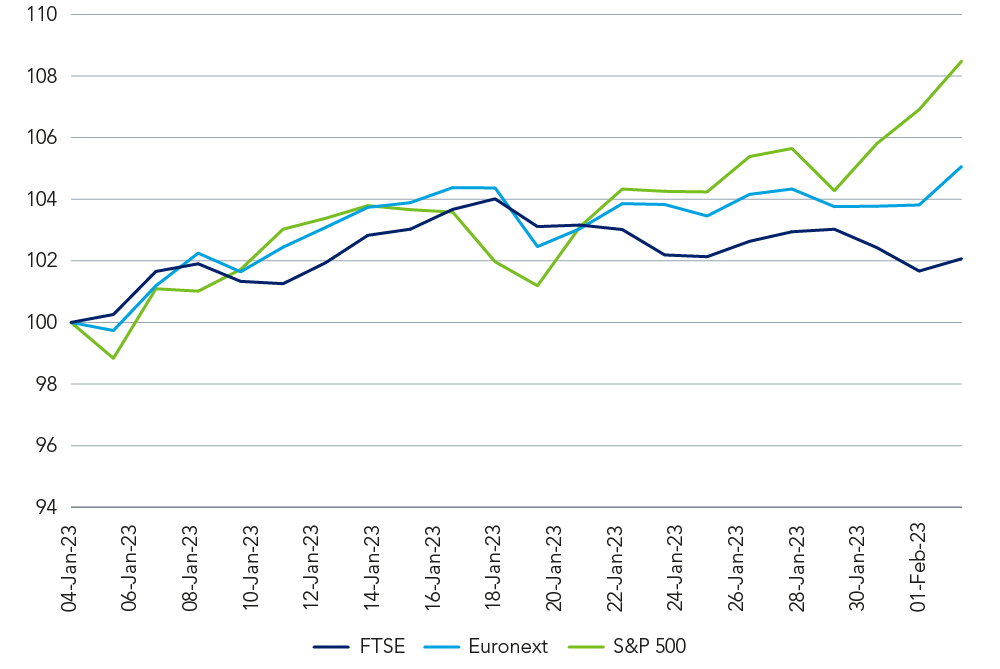- Fed raises its headline rate by 0.25% and hints at an end to tightening cycle.
- The European Central Bank and the Bank of England each raise rates by half a percentage point; mood music softens.
Markets rose this week in response to a slowdown in the pace of monetary tightening from three of the world’s cornerstone central banks.
The US Federal Reserve led the way on Wednesday (1 February) with news it would raise rates by just 25 basis points – a contrast to its more sizeable increases of recent months. In a press conference, Fed chair Jay Powell highlighted “a welcome reduction in the pace of [inflationary] increases”, but stressed there was still work to be done.
In the UK, the Bank of England Monetary Policy Committee followed the Fed’s lead, voting by a large margin to go ahead with its 10th consecutive rate rise to 4%, the highest headline rate in 15 years, but softening its language on the prospect of future rate rises.
The European Central Bank took a marginally more aggressive stance, raising its headline rate by 50 basis points to 2.5% but saying it expected to enact an additional half-point rate rise at its next monetary policy meeting.
Leading indices YTD (% return)

The market response
Lewis Grant, Senior Portfolio Manager, Global Equities, Federated Hermes, noted the Fed’s latest interest rate hike is unlikely to be the last in this cycle. Nonetheless, he said, investors had interpreted today’s news as evidence of a less hawkish approach.
“Powell’s words were not dovish, and indeed he indicated that peak rates would likely exceed market expectations, but the tone carried a new sense of caution,” said Lewis. “Equity market risk aversion has fallen in recent weeks, with investors latching on to any sign of optimism, and this minor change in Fed rhetoric was sufficient for markets to surge.”
Even so, the wider economic backdrop remains deeply uncertain, according to Lewis. On the one hand, China’s reopening is showing positive signs, with rising services activity, bustling city centres, increased air travel and reduced hospital numbers. Likewise, the IMF has raised its growth outlook for the coming year.
Less positive is a decline in house values in the UK and a mixed earnings season, said Lewis, “with some concern in the outlooks of bellwether names”.
The fixed income view
Michalis Ditsas, Investment Director, Fixed Income, Federated Hermes, said that, while credit markets had rallied on the more upbeat inflationary outlook, a longer-term question for investors was the timing of any future rate cuts.
“While risk and rates markets were positive, we continue to look through whether the Fed can in fact pull off a soft landing and instead focus on future growth prospects,” he said. “The growth impulse will be weak with high real rates, no fiscal boosts or gains to real incomes from a rebuild in employment that you would typically see coming out of a recession. Therefore, we believe that neutral rates are not any higher now than they were pre pandemic, which implies a need to lower base rates in the future to sustain economies. We expect this process to start in 2024.”
For further insights into the key themes that could shape markets in the year ahead, please see Federated Hermes 2023 Outlook







